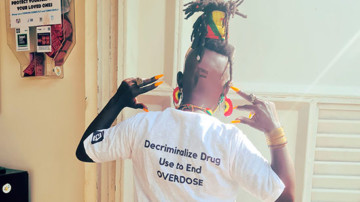
Death Penalty 100/100
1 Does the country retain the death penalty for drug offences? No
source: Harm Reduction International (2021), THE DEATH PENALTY FOR DRUG OFFENCES: GLOBAL OVERVIEW, Available online at: https://www.hri.global/death-penalty-2020
Uganda is not listed as one of the states that retains the death penalty for drug offences in Harm Reduction International's (2021) The Death Penalty for Drug Offences: Global Overview 2020.2 What is the extent of death penalty application for drug offences in the country? N/A
source: Harm Reduction International (2021), THE DEATH PENALTY FOR DRUG OFFENCES: GLOBAL OVERVIEW, Available online at: https://www.hri.global/death-penalty-2020
Not ApplicableExtra-Judicial Killing 75/100
3 To what extent is the practice of extra-judicial killing prevalent in the course of military and police anti-drug activity? To a small extent
source: Survey of Experts in States' Drug Policy
This score reflects the median result (weighted by topic confidence level) of the GDPI survey of experts in state drug policy.Militarised Policing 25/100
4 To what extent are military or special security forces are involved in drug operations? To a large extent
source: Survey of Experts in States' Drug Policy
This score reflects the median result (weighted by topic confidence level) of the GDPI survey of experts in state drug policy.Life Sentencing 48/100
5 Is there provision in legislation or sentencing frameworks for the imposition of life imprisonment for drug offences? Yes
source: GDPI Coding Team.
Section 5 of the Narcotic Drugs and Psychotropic Substances (Control) Act (2016) states that drugs trafficking carries a penalty of lifetime imprisonment.6 Where there is provision in legislation or sentencing frameworks for the imposition of life imprisonment for drug offences, what is the nature of such sentences? Life With Eligibility for Parole
source: GDPI Coding Team.
Prisons Act 2006. Section 89. Anyone serving a prison sentence of more than 3 years may be allowed to be released on temporary parole for a period of no longer than 3 months. This can only occur within the last 6 months of the sentence. Section 86 states that LS in Uganda is 20 years. This means someone serving a LS would not be elligable until they had already served over 19 years of the sentence.7 How frequently are formal life sentences imposed for drug use and personal possession offences? Rarely
source: Survey of Experts in States' Drug Policy
This score reflects the median result (weighted by topic confidence level) of the GDPI survey of experts in state drug policy.8 How frequently are formal life sentences imposed for drug supply offences (production, dealing, or trafficking)? Rarely
source: Survey of Experts in States' Drug Policy
This score reflects the median result (weighted by topic confidence level) of the GDPI survey of experts in state drug policy.Non-consensual confinement 25/100
9 To what extent is there a practice of non-consensual confinement in compulsory drug treatment centres? To a large extent
source: Survey of Experts in States' Drug Policy
This score reflects the median result (weighted by topic confidence level) of the GDPI survey of experts in state drug policy.

